Got some magazines? Got some scissors? Got some glue? Congrats, you’re joining my new cult. It’s called the Collage Cult…
Collaging in a reflective journal can offer numerous benefits and positive outcomes for early childhood educators.
Firstly, collaging allows educators to engage in a creative and expressive process, enabling them to visually represent their thoughts and experiences. This creative outlet promotes self-expression and can serve as a therapeutic practice, allowing educators to process and reflect on their emotions and experiences in a tangible and visually stimulating way. Additionally, collaging encourages a multi-modal approach to reflection, as educators can incorporate various materials such as photographs, drawings, and magazine clippings to represent different aspects of their teaching practice.
This multimodal approach helps to capture the complexity and richness of their experiences, enhancing their reflective process. Moreover, collaging can enhance memory recall and pattern recognition, as educators visually organize and connect their thoughts and ideas. It promotes a deeper level of reflection by facilitating connections between different experiences, observations, and theoretical frameworks. Overall, collaging in a reflective journal provides a creative, engaging, and multi-sensory method for early childhood educators to deepen their reflective practice and gain new insights into their teaching journey.
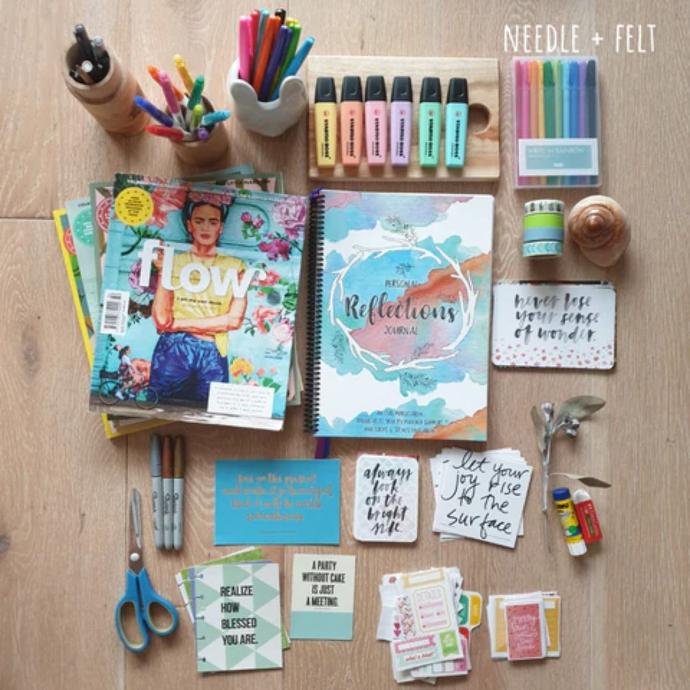
Not sure what collage is? Basically, you cut out whatever you want from magazines, old books, newspapers, your own artwork, etc, and piece it together to make a new visual piece.
You may have noticed if you’ve seen pictures of my reflection journal (last years or this years) that I enjoy a bit of collage! I’ve encountered the art of collage throughout my life, from primary school right through to University. Recently I was reflecting on why I use collage techniques so much, and I realised it’s actually a form of stress relief for me as it takes a bit of concentration, some patience and lots of problem solving. Like a puzzle!
As you move your cut out pieces about, rearranging and organising, you’re working on your creativity. So, if you describe yourself as ‘not so creative’, collage is a great technique for you to try. There’s no real risk of failure with collage, which is usually what we are afraid of when we are trying to be creative.
Three tips to collaging and scrapbooking
1. Plan and organize: Before you begin your scrapbooking project, take some time to plan and organize your materials. Sort and categorize your photos, papers, embellishments, and other supplies. Having a clear vision and organization system will make the process smoother and more enjoyable.
2. Tell a story: Think about the story you want to convey through your scrapbook. Whether it's a vacation, a special event, or a collection of memories, choose photos and elements that help tell that story. Arrange your elements in a way that guides the viewer through the narrative and creates a cohesive and visually appealing layout.
3. Add personal touches: Don't be afraid to infuse your scrapbook with personal touches and creativity. Experiment with different techniques like layering, stamping, and hand-lettering. Incorporate meaningful quotes, captions, or journaling to add depth and context to your pages. Remember, scrapbooking is a personal expression, so let your personality shine through and enjoy the process of creating something unique and special.
Before you get frisky with the glue...
My biggest tip is not to glue anything down until you’re happy with your positioning! Cut out all the things that grab your attention first, then get out your Reflections Journal and have a play with your cut outs to see how it looks and how you feel about it. Once you’re happy, glue it down!
So, time for some confessions...
I love collage not only because it is fun and relaxing, but also because it’s quick and easy. Yes, I love it because it’s a little bit lazy!
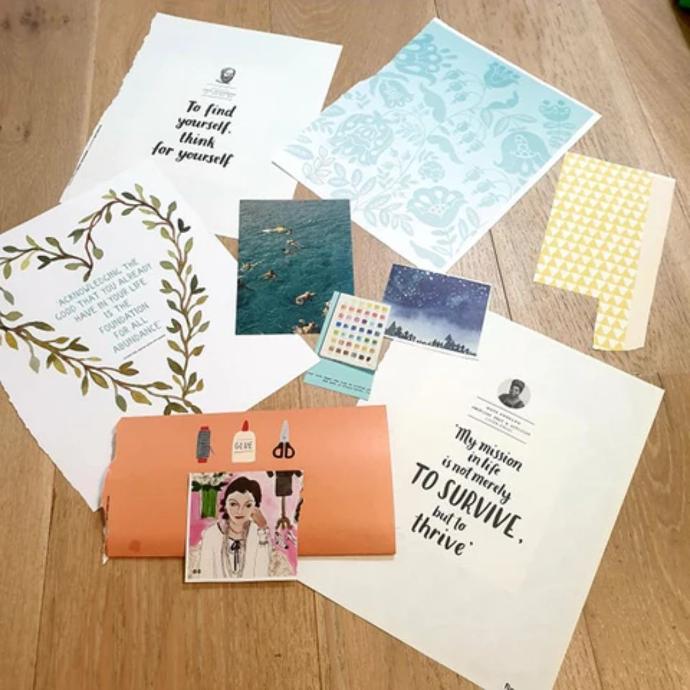
My hands get sore after too much colouring, and I’m also not so great at making colours flow well when I’m colouring. I feel more in control of collage and I can try different arrangements first, rather than starting to colour in and not liking my work very much…
It makes a bit of a mess. It does. Well, for me anyway. I end up with scraps of paper all over the place but I love the process because as I turn each page of a magazine, I find inspiration in small pictures, illustrations, words, quotes and photographs. Totally worth it!
It makes pages POP. You can add patterns, shapes, lines, illustrations, fancy typography, various colours, layers, etc. Your work will become vibrant as you style it through collage.
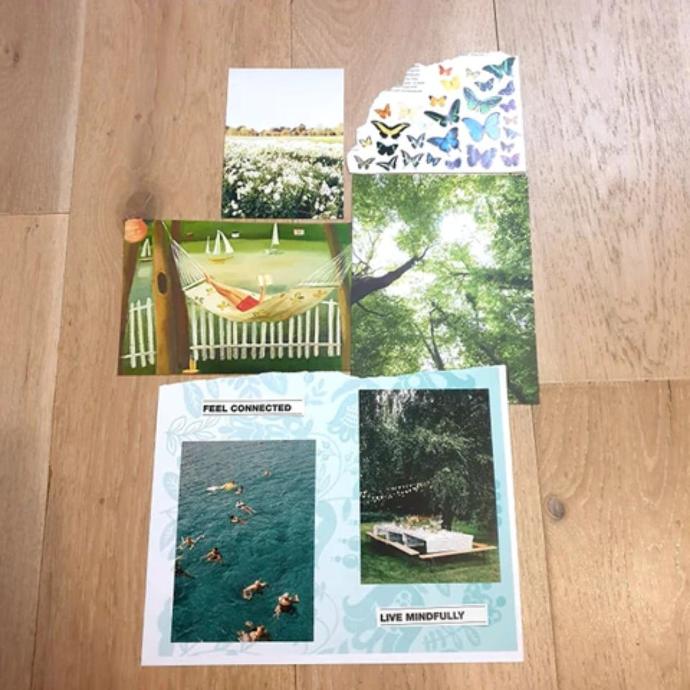
Anyone can do it. Yes, anyone. You don’t have to be an artist, you don’t have to be neat and tidy, you don’t have to have expensive and high quality art materials.
If you’re not quite convinced, here are some things for you to try....
Unleashing the creative beast in you...
- Flip through magazines and cut out words that capture your attention. Arrange them on a table, on the floor or on a piece of paper and have a think about why they captured your attention. Are they words that describe you? Your values? What matters to you? Maybe they represent the people around you, your work or your skills.
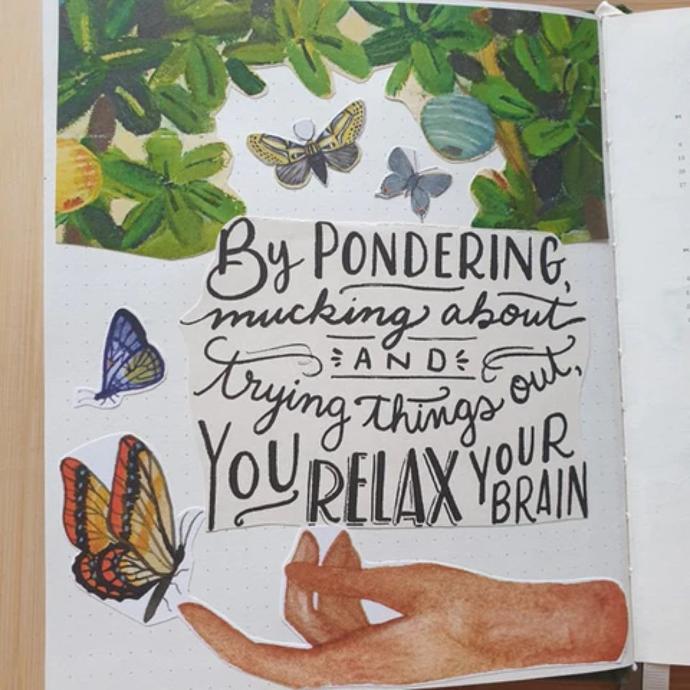
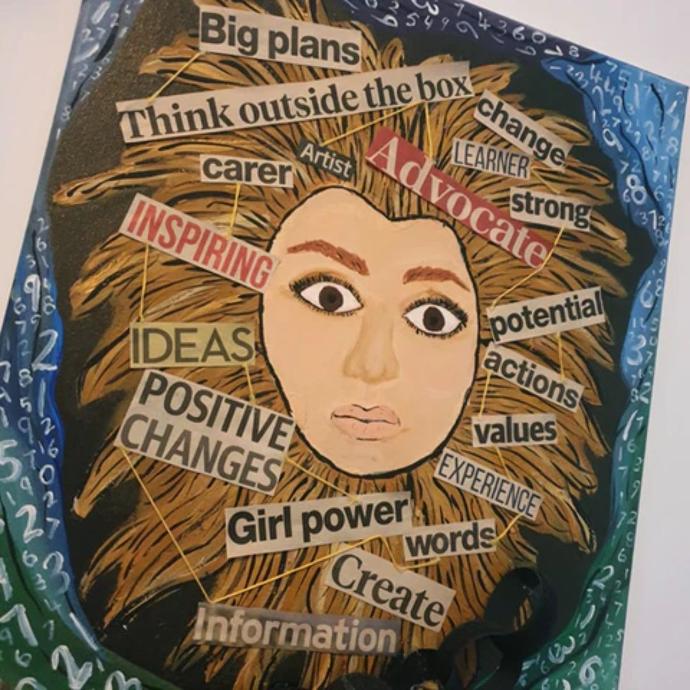
- Find snippets of pictures of different colours. Cut them out and then make a rainbow by arranging them by colour/tone (either as an arch, or a shape, or whatever way takes your fancy). Try monochrome too!
- Make something that clashes. Find various bits and pieces that just SO don’t belong together. Throw them together in a haphazard way just for fun. Add layers by using 3d elements like scrunched up paper, 3d stickers, adding wool or stitching onto it.
You can use any magazines you’ve got on hand. I like to buy Flow Magazine and read it a few times before I sacrifice it to the collage pile. It has beautiful articles, illustrations and so much creative inspiration packed into it.
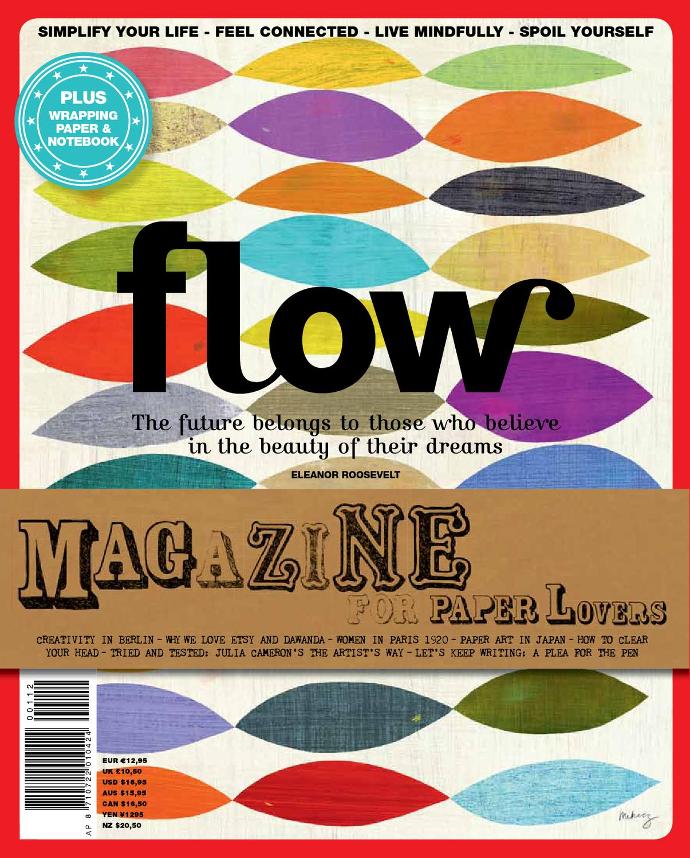
Other beautiful magazines include Breathe, WellBeing, National Geographic, Frankie, Womankind, travel magazines etc. You could also do a callout on your local Facebook freecycle page for neighbours who have magazines that you could use, to avoid you purchasing them.
So, your mission if you choose to accept it, is to go cut out all the pictures and fill your Reflection Journal with creative, reflective, beautiful bliss.
Owner of Needle + Felt and avid Reflection Journal User
Follow Needle + Felt:
Facebook: https://www.facebook.com/needlenfelt
Instagram: https://www.instagram.com/needlenfelt/
Pinterest: https://www.pinterest.com.au/needlefelt0479/